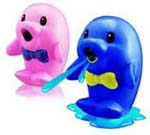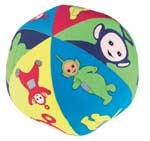|
|||
| Introduction | |||
| Childhood games and toys | |||
| A PLACE FOR TOYS
The best place for toys is to locate them in the largest possible space on the floor, with a special place to keep them (drawer, room corner, shelves), accessible for the children, who should have the responsibility of their care. This attitude of preservation of the toys must be started since the boy or the girl begins to walk (starting from the twelve months), to form this habit from the earliest age.
This accessible place must allow the children to use their toys any way they want, allowing them individual and free selections. This fact is very important because it helps to develop independence and personal manifestations of their intelligence, in the same measure in which necessities and interests are reinforced by the free play activity. The organization of the toys in the space requires a series of techniques that we should know, because it facilitates its use vastly. Let us see some general lines so that the use and conservation of the toys are profitable, effective and durable: 1.- Accessibility and visibility. What the child sees while he/she is moving round the space is what forms his/her ideas and plans when carrying out an activity. We will try to make the toys and game materials visible and approachable for the children, except those that may be dangerous or fragile. If toys are not visible, the adult will have to provide them, wasting a possibility of developing the childís autonomy and having him make his own decisions about what activity to carry out. To make the materials visible is advisable to keep them in transparent recipients or to make an opening in them so that the child can see what is inside. It is indispensable to put the materials close to the children, using the floor and low shelves and tables.
2.- Classification and tabs. In the place in which the different materials are located, we should put codes or labels so that once the child has used the material, she can return it to its original place. These codes should be known and commonly accepted by everyone. Good labeling and classification of materials favors habits of order, promotes constant exercises of classification, it facilitates control and knowledge of the state of the material, that allows a periodic analysis to decide how to improve the organization and distribution of tasks. This way, the use of materials constitutes a basic educational element, and it should become part of the classroom life. 3.- Containers. The election of containers for each type of material is important. Their shape depends on the material they contain. These elements can be trays, boxes, plastic bottles, baskets, etc. A good container highlights the material and makes it visible. 4.- Distribution. In a classroom the distribution of materials will depend on each case. In general lines we can say that distribution can centralized or decentralized. In the first case, the material is in two or three nuclei (the bookcase, the table,...), so it is difficult for the children to reach it, since in multitude of occasions "jams" will happen. In the second case, the material is located where the children can use it when they need it. Duplicate objects are subdivided and they are distributed in different areas of the classroom. Each area or work corner will have the necessary materials to carry out the activities, and, if the materials need to be shared they should be placed in nearby areas. 5.- Conservation materials. With the group of children set some rules on the conservation of materials. They are an educational element to keep in mind. Bear in mind the following suggestions:
|
||||||||||||||


